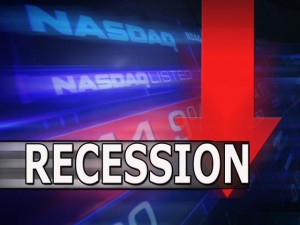
We have recorded the two strongest consecutive trimesters in the last decade
The Canadian economy grew by 6.1 per cent in the first quarter, on top of 4.9-per-cent growth in the fourth quarter, the two strongest consecutive trimesters in the last decade.
That news on Monday pretty well locked in the Bank of Canada’s announcement yesterday morning that it was raising the bank rate by 25 basis points to 0.5 per cent, from the rock-bottom stimulative rate of 0.25 per cent where it has been for more than a year.
This is a transactional move by the bank and its governor, Mark Carney, about the least the markets expected but less than a 50-basis-point increase that might have been justified by the strong economic data.
The modest increase is explained by the cautionary language of the central bank’s guidance, noting “the economic recovery is proceeding but is increasingly uneven across some countries,” while acknowledging “the possibility of renewed weakness in Europe.”
The euro worries that have roiled markets for the last month are obviously the main point of concern. The Greek sovereign debt crisis, and the domino effect on neighbours like Spain and Italy, triggered a nearly $1-trillion rescue package that might or might not stabilize the euro, but have thus far failed to calm volatility in global markets. The month of May was anything but merry – in Canada the TSX declined four per cent, while in New York the Dow was down eight per cent, its worst month of May since 1940.
Leaving the market churn aside, the fundamentals of the Canadian economy are remarkably solid across the board.
For example, while the 6.1-per-cent growth rate in the first quarter might be cause for concern about the economy overheating, the inflation rate of 1.8 per cent is still within the central bank’s target rate of two per cent.
The quarterly growth rates were led by housing and consumer spending, and the housing market will continue to benefit from cheap money. In spite of the bank rate increase, BMO later yesterday lowered its 25-year mortgage rate by 10 basis points to 4.25 per cent.
Such strong economic growth means jobs, jobs, jobs. In April, the economy grew by 109,000 jobs, the strongest month on record. When the May job numbers come out at week’s end, there’s every reason to expect another solid month.
A look inside the April unemployment numbers of 8.1 per cent shows Quebec, at 7.9 per cent, below the national average, and nearly a full point below Ontario’s 8.8 per cent. You don’t see that every day. In fact Quebec added 35,000 jobs in April and 91,000 since last July. When the May numbers come in, Quebec will likely have created more than 100,000 jobs in less than a year. (You’d think Jean Charest would be able to sell those numbers. Robert Bourassa sure would have, having once run on a slogan of 100,000 jobs over four years, not one.)
The other thing about the growth numbers is their positive impact on the federal deficit. The unofficial number for the last fiscal year ending March 31 came in last week, and at $47 billion, that’s $6 billion below the budget forecast of $53 billion, and it’s right on three per cent of GDP. This, among other Canadian good- news stories, is the best budget narrative in the G7, not by a little but by a lot. Try the British deficit of $400 billion, or 13 per cent of GDP, or the U.S. current deficit of $1.6 trillion, 10 per cent of GDP, equivalent to our entire economy.
For the current fiscal year, the deficit is forecast at $49 billion, but the whisper number is in the low 40s. This means that over two years, the debt will be $16 billion lower than forecast, and with luck the books might be balanced even before 2015. And this should end the argument that this is a structural as opposed to a cyclical deficit. A deficit that’s three per cent of GDP, on its way to zero, coming out of the scary downturn we’ve just lived through, is cyclical. End of discussion.
Carney has even benefitted from the euro crisis, with investors taking safe haven in the U.S. dollar, taking some of the upward pressure off the loonie. From exchange rate parity only a month ago, the loonie has backed off to 95 cents, which will make life a little easier for our exporters.
But the loonie should remain strong, not only as a petro currency, but because of the sound fundamentals of our economy and our fiscal framework.
There is no doubt that we have come out of the recession in better shape than any of our G7 partners.
“I would say unambiguously so,” says BMO economist Doug Porter. “Slowly but surely, Canada’s advantages are coming to the fore.”
Take our FREE Online Assessment Today!
Socialize with Abrams & Krochak
